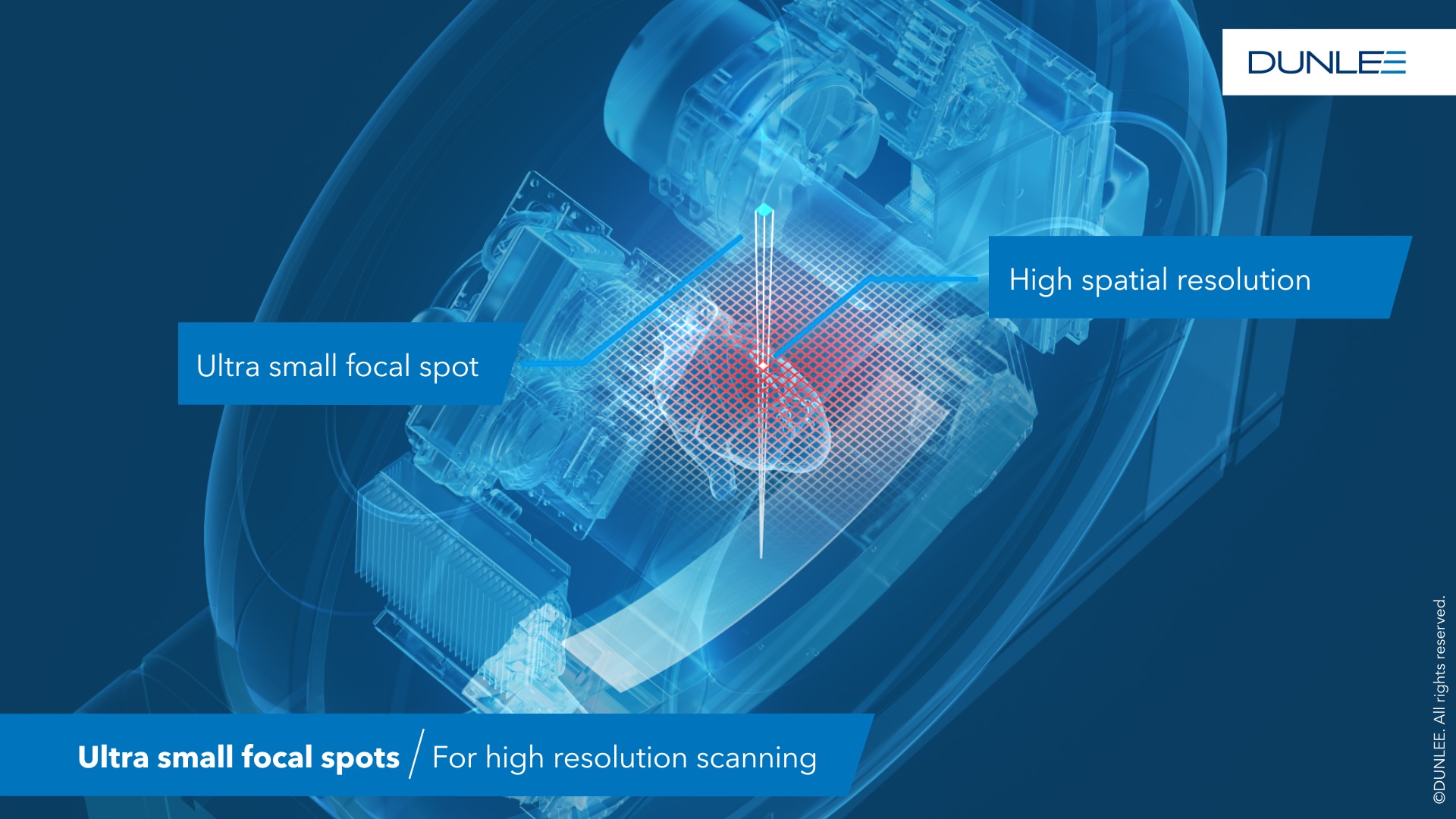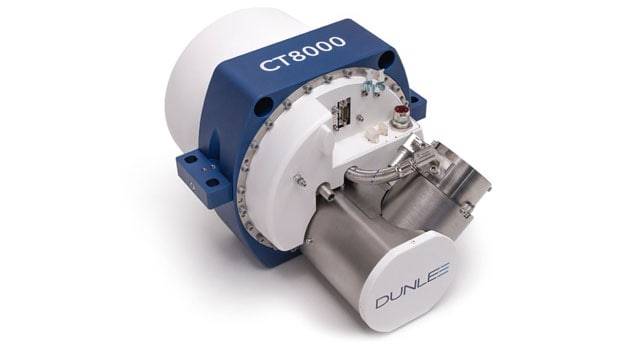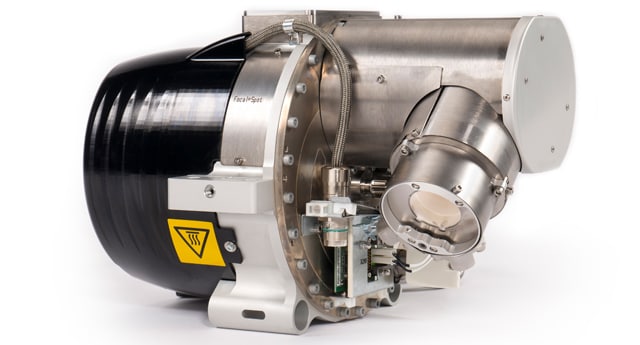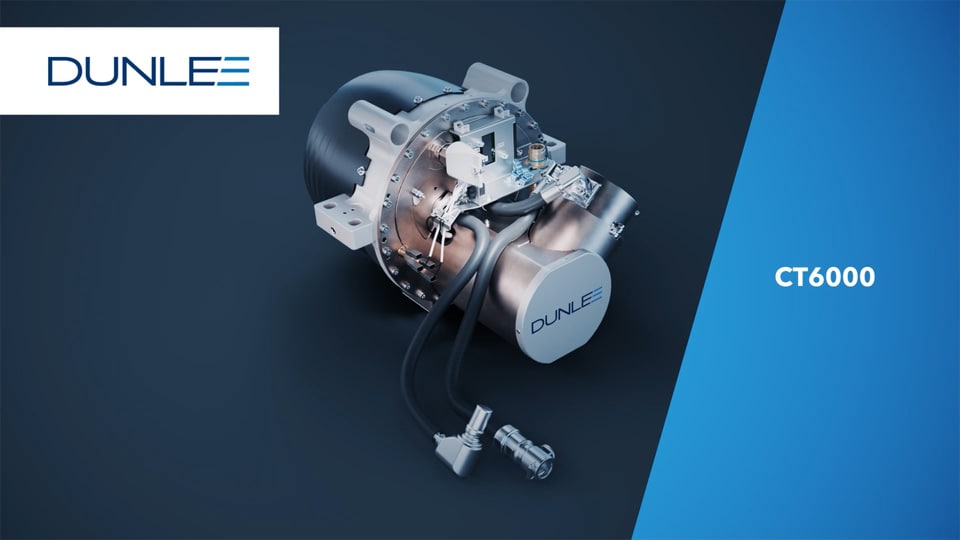UNLOCK THE FULL POTENTIAL OF YOUR ULTRA-HIGH-RESOLUTION CT AND PHOTON-COUNTING CT SYSTEMS
The future of high-resolution CT imaging starts with Dunlee’s extra small focal spots
Today’s advanced clinical applications require outstanding spatial resolution for both image quality and workflow. As detector resolution technology continues to push its limits, attention has shifted to increasing spatial resolution via the X-ray source. Dunlee’s small, stable focal spots are engineered to balance optimization of image quality, throughput and heat management to help you get the most out of your ultra-high-resolution CT (UHR-CT) and photon-counting CT (PCCT) systems. Our Xpert bundles now include three additional extra-small focal spot options, allowing system designers and OEMs to cover the entire spectrum of CT applications with greater flexibility. From our large 1.1 x 1.2 mm focal spot delivering 120 kW for high-throughput imaging, to the smallest 0.4 x 0.5 mm focal spot for ultra-high-resolution imaging, Dunlee’s tubes are designed to support evolving clinical and technical demands.

THE RISE OF HIGH-RESOLUTION CT IMAGING
CT imaging is undergoing rapid evolution, with spatial resolution and image detail becoming more critical than ever. Two leading approaches are shaping this trend:
Ultra-high-resolution CT (UHR-CT)
Utilizes conventional Energy Integrating Detectors (EID) with reduced pixel sizes for greater resolution.
Photon-counting CT (PCCT)
Incorporates photon-counting detectors that offer both higher resolution through smaller pixel sizes and spectral imaging capabilities. These technological advances require equally advanced X-ray sources. Smaller detector pixels demand focal spots that are not only smaller, but also thermally and mechanically stable - areas where Dunlee’s technology excels.
CLINICAL APPLICATIONS FOR HIGH-RESOLUTION IMAGING
High-resolution CT applications rely on precise visualization of fine structures, and the demand for improved diagnostic clarity is growing.

Cardiology: For visualization of coronary arteries and soft plaques
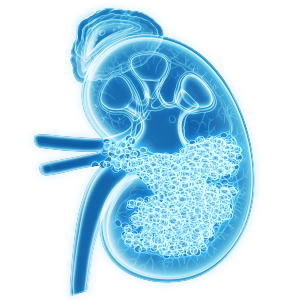
Oncology: For identification and characterization of small lesions and tumors

Neurology: For detection of cerebral microbleeds, small infarcts, and evaluation of fine neural structures
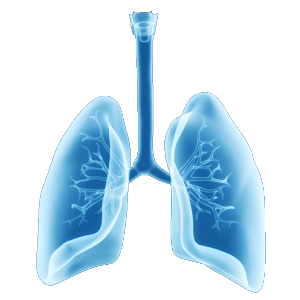
Pulmonology: For detailed lung imaging and detecting interstitial changes

Orthopedics: For visualization of complex bone pathologies, detection of microfractures, and assessment of implant placement
DUNLEE’S ROLE IN ENABLING UHR AND PCCT IMAGING
To fully leverage the capabilities of high-resolution detectors, the performance of the X-ray tube is critical. Our expert engineers have developed small, highly stable focal spots that maintain sufficient power and thermal performance for daily clinical operations.
How focal spot size affects CT resolution:
The key physical drivers of spatial resolution include: However, smaller focal spots increase the power density on the anode, making heat management essential to avoid system downtime. At the same time, high gantry rotation speeds for complex applications - such as heart scans - demand mechanical stability of focal spots, regardless of size.
Three additional focal spot sizes for unlocking the full potential of high-resolution detectors
With the Xpert bundle, Dunlee offers different focal spot options to cover the entire range of CT applications:

ANTI-SCATTER GRID TECHNOLOGY SUPPORTING IMAGE PRECISION
Advanced CT systems require equally advanced anti-scatter solutions. Dunlee offers a new generation of Anti-Scatter Grids that are optimized for high-resolution imaging: These grids maintain image sharpness and contrast, particularly when used in systems requiring high precision. To learn more, please visit www.dunlee.com/a-w/3d-metal-printing/our-offer/anti-scatter-grids-for-ct.html.

We also support you as you design systems for the next generation of clinical applications.
DUNLEE’S SOLUTION: THE XPERT BUNDLE
DUNLEE’s Xpert Bundles with CT6000, CT6500 and CT8000 provide extra-small focal spots to address high resolution imaging:
| | | | |
| Dunlee CoolGlide LMB | | | |
| Focal Spot Options | | | |
Do you want to learn more about how Dunlee supports system design for high-resolution CT?
From choosing the right focal spot configuration to integration into your imaging system, our experts are here to support you! Reach out to us at marketing@dunlee.com and let’s shape the future of high-resolution CT together.
Sources & Remarks
Photon-Counting Detector CT of the Lungs. Diagnostics. 2023; 13(23):3522. https://doi.org/10.3390/diagnostics13233522


About Dunlee
